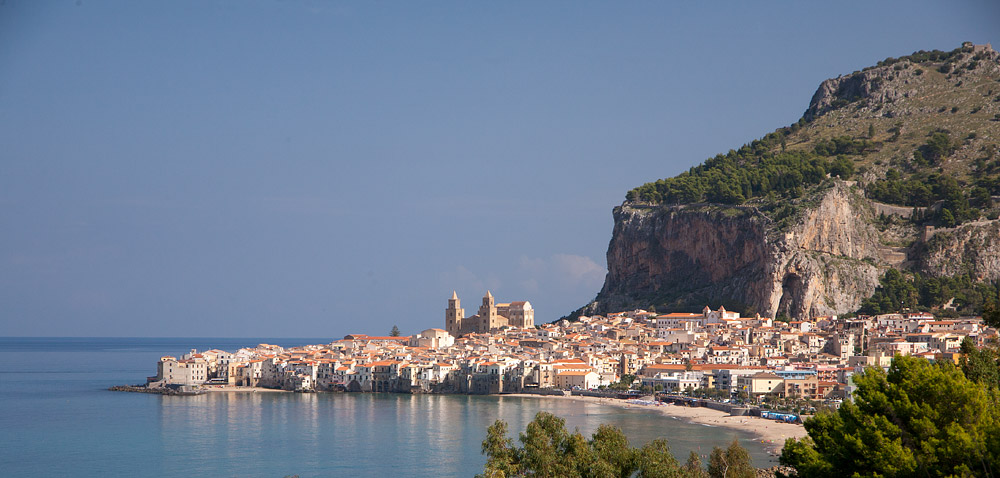GOLF HOLIDAYS IN SICILY
An introduction to golfing and holidays in Sicily.
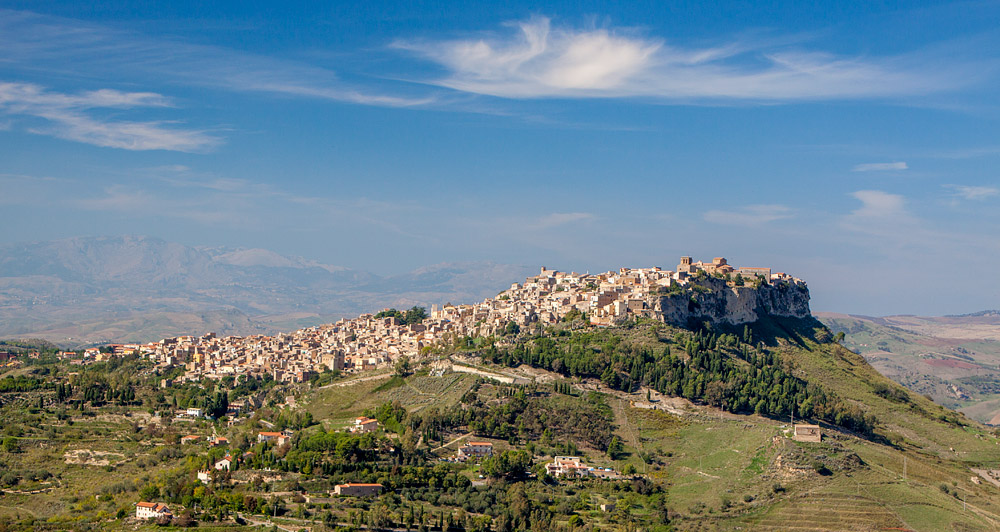
The largest island in the Mediterranean, Sicily sizzles in the near African sun all year round: an almost mythical island with its long history of invasions and civilisations, a darker recent past and now a very bright future. The cuisine and wines are legendary – even mainland Italians rave about them, that's saying something! The Ionian Sea is clear and warm, the hilltop towns with their ornate baroque cathedrals are fascinating, the archaeological sights extraordinary, the language impenetrable (even if you speak Italian!) and the locals passionate about their island with just a hint of craziness (could it be all that sunshine?).
Aside from maybe December and January when it can rain a little, Sicily is perfect for sunny golf holidays when all at home is dark and dank. The height of Summer may be a little too hot for most as temperatures can hit the 40s, but if you are prepared to play early, you will find plenty of room on the Fairways.
The golfing areas of Sicily
Sicily is a big island, getting from one side to the other will take a good few hours driving, although the motorway links are now pretty good (apart from the southeast corner). Sicilian golf clubs are however quite spread out across the island. This means that playing a selection of courses from one base is not really feasible: two or three centre holidays are required or playing the same course a few times.
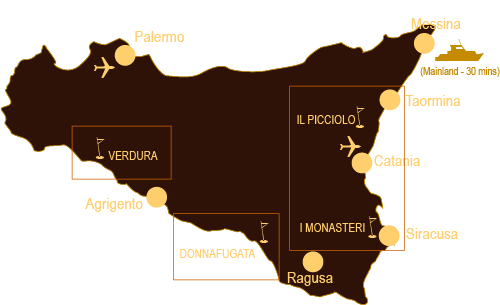
Click on any rectangle for full details of golf courses and hotels in that area of Sicily.
Golf in Sicily splits into three main areas; two golf resorts with 36 holes: Donnafugata in the Southeast and Verdura in the Southwest; plus two more courses on the East coast Il Picciolo and I Monasteri, close to the tourist town of Taormina and flaming Mount Etna. The eastern side of Sicily also happens to have the majority of the major tourist attractions, plus good flights into Catania; so the east coast is probably the best place to start your Sicilian golf adventures.
There are another two courses near Catania currently under seed - we will keep an eye on these and let you know as soon as they are open for play.

Getting to Sicily
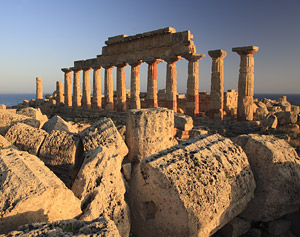
Sicily has two main airports: Catania on the East coast and Palermo in the Northwest. The most convenient for golf holidays is clearly Catania as this will land you in the most densely golf coursed part of the island; Palermo is a good option if you are just heading for some pampering at Verdura.
These days of course you may always fly into one and home from another and see a lot more of Sicily and its golf courses in between!
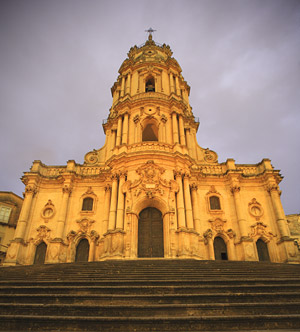
Sicilian landscape
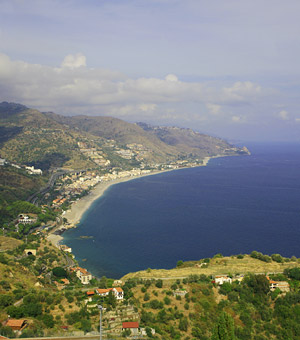
Sicily is nearly all hills and mountains. As soon as you leave the coast you start climbing up into the hills where you will find stunning little villages perched on mountain tops seemingly defying gravity. The hills are a beautiful backdrop to many a holiday snap and the smoking summit of Etna, Sicily's quite active volcano, is sight to behold.
The area around Ragusa is arguably the flattest stretch of land and good use is made of its fertile soil with intensive agriculture.
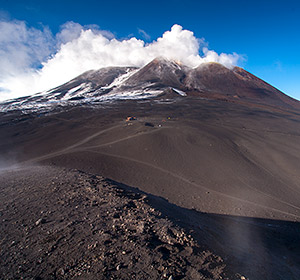
Sicilian cuisine
In a word: delicious. Sicilian cuisine varies somewhat across the island but is broadly based on their own twists on pasta (Busiati for example) with plenty of rich sauces combining olives, herbs, sun-dried tomatoes with fish and seafood. Everywhere you will find Sicily's favourite nut: the pistachio, widely used in both sweet and savoury dishes.
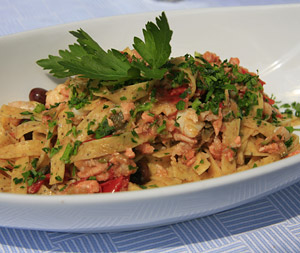
Another Sicilian speciality is the Arancina (it looks like an orange). These are balls of sticky rice with a variety of fillings that are coated in breadcrumbs to make them a very portable snack.
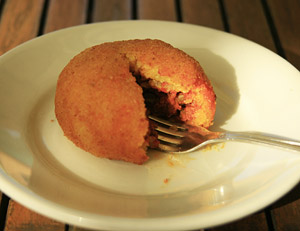
Carnivores should keep an eye out for the rare breed of Nebrodi black pigs that run wild in the Nebrodi National Park just north of Etna - a delicious flavour reminiscent of wild boar, although lighter in colour.
The Sicilians have a very sweet tooth too and the mountains of pastries in the pasticcerie have to be seen to be believed! Nobody should leave Sicily without trying at least one Cannolo: a crisp outer layer encases a sweet gooey filling, the perfect accompaniment to your mid-morning Cappucino.
When it comes to vino, some unique Sicilian grape varieties exist: try the light and fruity Frappato or the intensely rich Nero d'Avolo.

A (very) brief history of Sicily
Just about anyone who's anybody in history has had a turn at running Sicily: Phoenicians, Greeks, Romans, Byzantines, Arabs, Normans, French, Germans, Spanish, Italians and even the British have had a go! Most have left mementos of their passing, some more obviously than others.
In summary:
Traces of humanity have been found in Sicily dating back as far as 20000 BC from the earliest cave dwellings, through the Neolithic and Bronze ages up to the arrival of the Carthaginians around 1000 BC.
A couple of hundred years later the Greeks arrived (near Taormina) and there are some superbly well-preserved evidence of their presence - the temples at Agrigento and the theatres at Taormina and Siracusa for example, are impressive sights.
From 200 BC the Romans took control and made good use of the fertile land to feed their armies and growing population up until 450 AD when the Vandals invaded (from North Africa) and spoiled everything!
One hundred years later the Greeks make a re-appearance in the shape of the Byzantines and Siracusa becomes the capital of their empire for a while.
Next on the scene are the Moors who takeover from about 800-1100 AD, many signs of the Islamic faith are still evident, especially in and around Palermo.
Around 1100 the Normans oust the Arabs then proceed to form a jittery coalition with them to rule the country (as they are a little stretched themselves!).
In 1190 Richard the Lion-Heart makes a brief appearance, sacking Messina on his way to one of the crusades. Four years later the Pope sells Sicily to Richard, who promptly gives it to his eight year old son Edmund as a present (what a nice father!). Only for a later Pope to whisk it away and and hand it to the French in 1266.
In 1282 the Spanish arrive in the shape of Peter of Aragon and rule the country for the next 500 years, basically milking the land and the people dry to fund their expansionist ideas.
The British took over for about a decade in the early 1800s (mainly to supply Nelson with wine for his sailors). There followed a period of disputed rulerships between the British, French and Bourbons until 1860 when Garibaldi sets to work on the unification of Italy.
